Karl Orff "Carmina Burana"
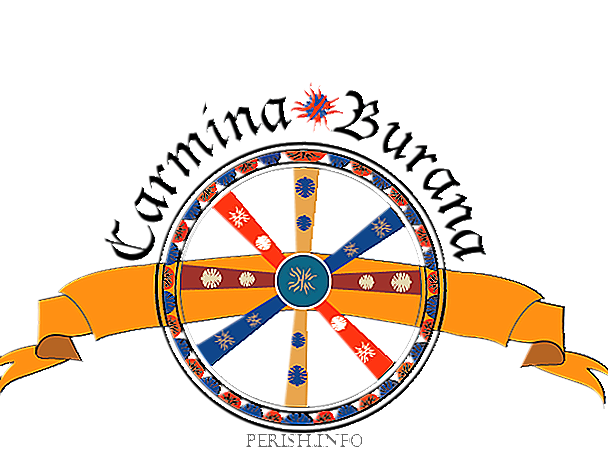
One of the most controversial classical works of the 20th century is the symphonic cantata for choir, soloists and orchestra "Carmina Burana". From the moment of the premiere to this day, one can come across diametrically opposite opinions about both the composition and its author. But all the contradictions are in keeping with the spirit of the epoch: 1937, Nazism in Germany, the composer's Jewish roots ... None other than fate itself, or Fortune, had a draw here.
The story of the textual basis
At the time of writing, Carl Orff was 40 years old, and he was known more as an innovative teacher. He and his wife had just recently opened a school where they taught children according to their own methods - through movements of the body, rhythm and playing the simplest instruments in the child, they tried to "wake up" natural musicality and talent.
And at that very moment a songbook was found in his hands, found in one of the Bavarian monasteries. It was dated to the 1300th year, and contained many texts written by vagantes, itinerant singers and poets. It was a medieval monastic songwriter, and by that time had already gone through 4 editions. The name "Carmina Burana" was given by the first keeper and publisher of the collection Johann Schmeller by the name of the area in which he was found. "Fortune, effortlessly, slipped into my hands a catalog of Würzburg antiques, where I found a name that magically riveted my attention:" Carmina Burana - German songs and poems from 13th century manuscripts, published by Johann Schmeller. "
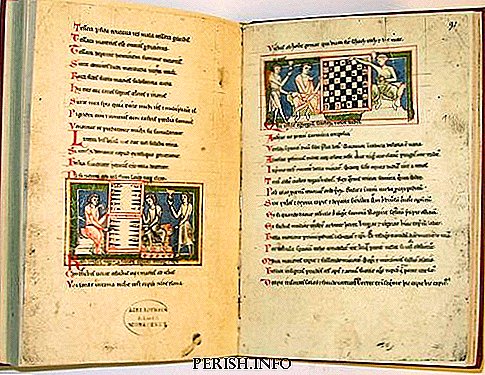
In the collection about 250 texts of different authors in different languages were collected: in colloquial Latin (by the way, pharmacy prescriptions on it are still written to us), in Old German and Old French. When you first look at the list of topics opus it seems nonsense to combine them into a general book. Despite the fact that they were found in the monastery, there was nothing religious in it. On the contrary, all lyrics are very vital - lyrical love serenades and romances, drinking songs, funny parodies. A little later in the article this will be explained.
On the very first page there was an image of the wheel of fortune. The emblem consists of several circles that connect the outer, inner and spiritual worlds. In the center - the figure of the goddess of Destiny. Spokes like parallels. But when the wheel rotates, the person depicted on the edges of the picture, is in different positions. This symbolically illustrates the content of the allegory: regnabo, regno, regnavi, sum sino regno. Translation: I will reign, reign, reign, I am without kingdom. Fortune rotates the wheel at random (it is sometimes painted blindfolded).
In the dictionary of symbols, we find a reading: "the one who is elevated today will be humiliated tomorrow," "the one who arrives at the bottom today, the fortune will raise to the heights tomorrow," "Mrs. Fortuna rotates the wheel faster than the windmill."
History of creation
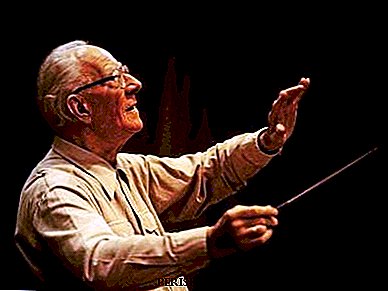
For the cantata, the composer selected 24 verses (the final 25 repeats the first, thus closing the cycle). In choosing him assisted friend-translator. The work began instantly, on the very first day in 1934, he wrote the first chorus "O Fortuna". Many texts were accompanied by pneuma (imperfect musical notation), which Karl Orff ignored, not even trying to decipher. He immediately began writing his music, and the musical text was fully ready in 2 weeks. The rest of the time before the premiere, he was engaged in writing the score.
Since childhood, Karl Orff dreamed of his theater, made his productions, sets, wrote texts for them, etc. Creating a one-man show was his dream. Carmina Burana became the embodiment of such an idea. Moreover, the author himself said that it was from her that the counting of his works should be kept, and everything that had been written before that should be burned. And indeed, many creations he simply destroyed.
Stage cantata is, first of all, a spectacle, a mystery where word, music, ballet and vocals are combined. In addition to the sound impact, the author thought out the original stage design - during the entire hour that the performance was going on, a huge wheel rotated on the stage, which threw the audience into awe.
At that time, the theme of the chosen Aryan race was very popular in German society, and exhibitions were held with exhibits showing signs of degeneration, degradation, etc., as the authors-artists were not Aryans. Such exhibitions were visited by millions of citizens. And the success of Orff’s innovative music in the wake of this strange delusion of “deformities” raised great doubts.
Music
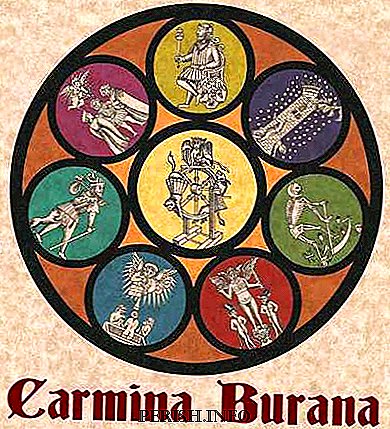
Compositional construction of cantata is very interesting. The prologue, the first number - the famous choir "Oh, Fortune" - sounds so bright, it gets so fast at the crescendo for 88 clocks of sound that it is simply impossible to further increase the tension in the music! It seems that the cantata begins with a climax!
The most celebrated cantata number, the title choir, is in fact the processing of Aphrodite’s complaint from a 17th century composer’s opera Claudio Monteverdi. At one time, Carl Orff seriously fond of Monteverdi's music, and even made the editorial staff on the opera Orpheus, which went on in many opera houses.
But the quote "Oh, Fortune" is straightforward. Interesting musical language numbers. From the melodic point of view, this music can be even counted as somewhat primitive - rather narrow laconic moves, a short closed loop, constantly repeating - an ostinatny sound, in bass throughout the whole number sounds tireless Re, changing only the power and volume to the end. This issue is clearly the main theme of the rhythm - persistent, elastic, pulsating.
You can also say that the melody is intonationally close to the medieval choir "Dies Irae". But if you remember that the text in Latin in time refers to the Middle Ages, then everything becomes logical. Although the text "Oh, Fortune" has no church canonical meaning, but rather refers to the so-called colloquial (or vulgar) Latin, its meaning is strict and stern - fortune commands people with a strong hand: while one is overthrown, the other one already rises to the heights so that in the next instant it is thrown back to the ground. No one ever knows what will happen to him in the next minute.
The meaning of the text is clear to the Germans or the French in much the same way as our contemporaries Word of Regiment of Igor is by ear. Nevertheless, its expressiveness plays a large role in the dramatic development of the number. From an alarmingly formidable at the beginning, with consonants clearly bouncing off the teeth, in a slightly chanting manner, to a biting, accusing sound in the second half.
Such a powerful dynamic development of the first issue requires a contrasting continuation. The second number ("I mourn the wounds inflicted by fate") is much drier in melody and rhythm - against the background of sustained long sounds, a melody resembling Baha (with syncopations, arrests), develops in a small tessitura. This choir opens part 1 and continues the theme of Fortune, although the theme of Spring, a wonderful transformation, is already here.
As conceived by the composer, the stage embodiment of the cantata was supposed to include not only the orchestra, the voices of the choir and vocalists, but also color solutions. If the opening number was to be performed in the presence of black, then the next green appears. The subsequent development of the line of colors will lead the audience to pristine white color and will end in a return to black.
The contrast of white and black is not accidental here. If you revert to the texts that initially seem to be a little blind set of unrelated, unrelated songs, you will notice this alternation: blackness, symbolizing sin, dirt, suffering and atonement, gradually turns to the rebirth of life (in spring), the flowering of love from the first timid love to the present sublime, almost divine, and then again goes into the direction of sin, there are free songs from the tavern, immersion in the earthly, low, sinful - to the black and hellish torments. The wheel has completed a circle.
The symbolic circle in this context draws an allegory of the spiritual awakening of man, the path of his soul, which can both rise in its aspirations and fall into the abyss. The harmony of color in 4 parts develops from pale pink to purple-red, which also resembles the royal mantle.
The cantata music is very picturesque. Rooms dedicated to love, performed by soloists. Whereas satirical parodies and songs of monks are performed by the choir, accompanied by reinforced orchestral instruments. There are a lot of stylizations under folk song household folklore, and he doesn’t use exact quotes, but the music will often remind the listener of something.
Famous numbers:
№1 "Oh, Fortune" - to listen
№2 "Fortunae plango vulnera" - to listen
№5 "Ecce gratum" "Sweet Spring" - listen
The processing and cover versions of modern artists are also known:
- Enigma;
- Era;
- Therion;
- Trans-Siberian Orchestra.
"Carmina Burana" in the movies

This music is very fond of modern television and cinema. It sounds in television shows all over the world, in movies and TV shows, even in commercials. Most often, of course, use "Oh, Fortune." It is not possible to compile the entire list of TV projects in which you can hear excerpts from "Carmina Burany", only a small list:
- m / s "X-factor" (2016);
- m / v "How I Met Your Mother" (2014);
- m / s "Right wife" (2014);
- s / s "Brooklyn 9-9" (2014);
- shopping center "Losers" (2013);
- s / s "The Simpsons" (2009, 2011);
- the movie "Pretend to be my wife" (2011);
- t / s "So you can dance" (2009-2010);
- the movie "Dancing with the Stars" (2009);
- c / f "The Bride from Beyond" (2008);
- the movie "The Best Movie" (2008);
- the movie "Magicians" (2007);
- t / s "Friends" (1999);
- the movie "Bachelor" (1999);
- The Congenital Killers (1994).
Premieres
The premiere date is June 8, 1937 (The Frakfurt Opera). In general, almost any classic composition is usually written that "the premiere was a resounding success." However, this cannot be said about the premiere of "Carmine Burana".
Critics, journalists, newspaper reporters wrote conflicting reviews about the premiere, but one thing is certain: everyone wrote about this! The responses were of this nature:
- "the music is not bad, but there is no doubt that the whole impression was spoiled by an incomprehensible text in Latin";
- “the author’s fruitless efforts are not crowned with success - the Middle Ages have passed, and all this Latin and Roman motifs are not interesting to anyone now, we need music that would reflect the modern needs of society”;
- "the tremendous musical creative act made a tremendous impression, it indicates new directions";
- "the strongest impression of the festival is the sensational performance of the stage cantata of Karl Orff";
- "writing a shocking novelty."
But there was another review, not written, but spoken orally, which played a key role in the further fate of the work. It belonged to the founder of the organization "Union of the struggle for the purity of German culture," Mr. Rosenberg. He was the author of the racial theory of the National Socialists. He called the music of Orff (literally) "Bavarian Negro music", hinting at its ignoble level.
Thus, by the end of 1937, everyone in Germany heard about Karl Orfe, who was hitherto unknown. But already 4 days after the premiere, for unknown reasons, the production was closed, and the cantata was re-performed only years later.
Later, after the war, "Carmina Burana" entered the repertoire of many theaters, its performances went with great success, because in such a work any director could show his own me. There were a great many experiments - the scene was designed in the most unpredictable way. But today the main version of the cantata is the concert, less often the plotless ballet to the phonogram.
Interesting Facts:
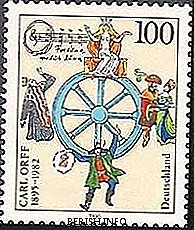
- in fact, it was the first music written and performed in Nazi Germany, at that time many cultural figures left the country, fled from fascism or for ethical reasons;
- the composer’s parents and ancestors are hereditary Jews, it’s surprising that he managed to hide it in that situation;
- shortly before the writing of "Carmina Burana", Karl Orff received an order to write music for Shakespeare's famous work "A Midsummer Night's Dream", since the previous author (Felix Mendelssohn-Bartholdi) was banned for his non-Aryan origin;
- Consent to this contract brought Orfe the favor of the authorities - various awards, support, postponement and then complete deliverance from the need to serve in the army;
- as a result, there is still no complete clarity about the true relationship of Karl Orff with the Third Reich: was he a partisan, a fighter against National Socialism, or sincerely supported his ideas. According to some sources, he himself claimed that he was friends with the disgraced (and then executed in 1943) musicologist Karl Kuber. According to others, that he had a close, indissoluble connection with the authorities.
And the controversy over his civil position has not abated until now. Times do not choose. An artist is born with an inner need to create and create. But how small is a person who at any moment can be crushed by a state machine or an ideology of a whole generation.
The twentieth century is filled with similar events. Not only German composers, writers left their homeland, forever losing their roots. Humanity is evolving technically, but it does not always have time to draw the right conclusions from historical lessons. And sometimes art is faced with the task of not only finding inspiration, but making the most difficult moral choice.

Leave Your Comment